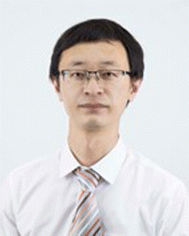Materials Horizons Emerging Investigator Series: Dr Kai Wang, Soochow University, China
Kai Wang received his BSc degree from the Department of Materials Science and Engineering, Beijing University of Aeronautics and Astronautics (China) in 2012, and his PhD from the Technical Institute of Physics and Chemistry (TIPC) of the Chinese Academy of Sciences (China) in 2017. After that, he continued his research career as a postdoctoral fellow at Soochow University (China) and was a visiting researcher at Prof. Chihaya Adachi's group at Kyushu University (Japan) for one year. Since 2021, he has been an associate professor at the Institute of Functional Nano & Soft Materials (FUNSOM), Soochow University (China). His research interests are mainly focused on organic optoelectronic materials and devices. He has published more than 60 papers including ca. 40 papers as a first author/corresponding author.
Read Kai Wang's Emerging Investigator Series article ‘Distinguishing the respective determining factors for spectral broadening and concentration quenching in multiple resonance type TADF emitter systems’ ( https://doi.org/10.1039/D2MH00511E ) and read more about him in the interview below:
MH: Your recent Materials Horizons Communication investigates spectral broadening and concentration quenching in multiple resonance type thermally activated delayed fluorescence emitters. How has your research evolved from your first article to this most recent article and where do you see your research going in future?
KW: When I started my research, thermally activated delayed fluorescence (TADF) was a brand-new topic in the field of OLEDs. Not only were efficient TADF materials rare, but the mechanism behind them was not fully understood. Our first article (https://doi.org/10.1039/C7TC00681K) was aimed at trying to understand the influence of steric hindrance on TADF properties of D–A type emitters. With more in depth research, the importance of steric hindrance has been gradually clarified. We reported that steric hindrance can help to induce dual conformations in D–A type molecules1 and affect intramolecular charge-transfer properties (https://doi.org/10.1039/D0SC05631F). On the other hand, steric hindrance can also influence intermolecular interactions in terms of molecular packing, which effect the macroscopic properties of amorphous films. Overall, steric hindrance is always an important factor we take into account, which helps us build a clearer molecular structure–performance relationship. Multiple resonance (MR) type TADF molecules are a new class of TADF molecule that have fascinating properties such as narrow emission bands and high efficiency, while spectral broadening and concentration quenching are weaknesses that reduce their main advantages at high concentrations. To address this, we believe their general determining factors should be clarified in terms of their molecular structures and intermolecular interactions. Thus comes our current Materials Horizons work. And of course, steric hindrance is one of the crucial factors during our investigations. Eventually, different steric hindrances help to give a rational explanation for spectral broadening and concentration quenching. I believe it is an important step for us to eventually address these defects for MR-TADF emitters. In the near future, I believe understanding and developing MR-TADF emitters is an important topic for our research. MR-TADF emitters are totally different systems from conventional D–A systems. With a deepening understanding of MR-TADF, we believe MR-TADF emitters with high operational stabilities, color purities, and high efficiencies should be just around the corner.
MH: What aspect of your work are you most excited about at the moment?
KW: I am particularly excited that, in this work, we deepened the general understanding of the structure–property relationship of the MR-TADF emitter systems. As previously mentioned, MR-TADF is a new topic and totally different from conventional TADF induced by D–A pairs. Although researchers can develop MR-TADF emitters by following some general frameworks, our understanding of MR-TADF systems is still limited, which hinders efficient development. I think our current work goes beyond specific systems, and the conclusions should be universal for a large number of MR-TADF emitters, which can guide the further development of MR-TADF emitters with low concentration sensitivities.
MH: In your opinion, what are the most important questions to be asked/answered in this field of research?
KW: In my opinion, the most important questions in this field of research are how to efficiently harvest triplet excitons and how to achieve long-operational lifetime devices, especially at high current densities.
MH: What do you find most challenging about your research?
KW: I think accurately predicting photophysical and optoelectronic behaviors of MR-TADF molecules is one of the most challenging issues. It generally takes a long time and multiple attempts to finally obtain new MR-TADF emitters. So we are eager to know which are the preferred candidates before synthesis.
MH: In which upcoming conferences or events may our readers meet you?
KW: Due to Covid-19, I can only attend some domestic conferences in China. I really hope the Covid pandemic will be ended soon, so I have a chance to attend the relevant international conferences offline to share my views and work with other researchers.
MH: How do you spend your spare time?
KW: I spend most of my spare time with my family. Listening to pop music is also a hobby that helps to replenish my spirit.
MH: Can you share one piece of career-related advice or wisdom with other early career scientists?
KW: A scientist is an artist: do research that only you can do and that leads to ground-breaking discoveries.
References
- K. Wang, C.-J. Zheng, W. Liu, K. Liang, Y.-Z. Shi, S.-L. Tao, C.-S. Lee, X.-M. Ou and X.-H. Zhang, Adv. Mater., 2017, 29, 1701476 CrossRef PubMed.
| This journal is © The Royal Society of Chemistry 2022 |

